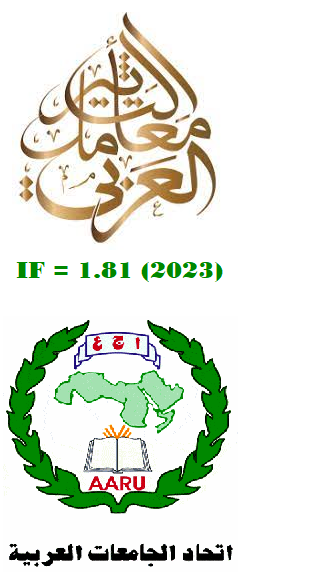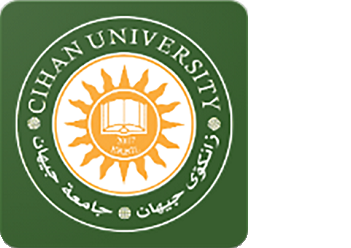A Study of the Teaching-Learning Challenges of the 21st Century at University ELT Classroom
Abstract
With the increased anticipation of a university degree as a requirement for workforce entry, the criticism of business leaders, and the general public, it becomes critical for institutions of higher education to know what they are offering students, especially the English language and how well this subject is being presented. Therefore engaging and preparing students for life after school is a great challenge to teachers and institutions. Through the implementation of new tools and practice, this study was designed to explore the teaching-learning challenges of the 21st century at the university ELT classroom. The researcher administered a questionnaire to 171 students and 40 faculty members from three universities in Erbil, Kurdistan Region of Iraq. Statistical Package analyzed the data for Social Science, including Descriptive statistical analyses such as the mean and standard deviation, also Pearson Correlation and ANOVA test to compare the groups' responses. The results showed that learning a second/foreign language collaboration skills while in the classroom inside universities is one of the suitable ways for learning in current time. Also, students in universities have been able to assess their collaboration skills when working via group effectively and positively effect their learning of the English language. Finally, the students have tried to develop their skills by using technology as a tool for learning; this is showing as finding in this study that the availability of tools or technology devices positively and effective factor for students to learn second/foreign language and skills in their universities.
Downloads
References
Mergendoller, J.; Markham, T. and Lamar, J (2012). Pervasive management of project based learning: Teachers as guides and facilitators. In C. M. Evertson & C. S. Weinstein (Eds.), Handbook of Classroom Management: Research, Practice, and Contemporary Issues, Mahwah, NJ: Lawrence Erlbaum, Inc.
Dörnyei, Z. (1997). Psychological processes in cooperative language learning: Group dynamics and motivation. The Modern Language Journal , 81(4), 482-493.
European Commission (c) /Education for Change (2013). Study of the impact of eTwinning on participating pupils, teachers and schools. Luxembourg: Publications Office of the European Union. Accessible online here: http://ec.europa.eu/education/news/2013/20130215_en.htm Accessed April 11th 2020.
Hattie, J. (2003). Teachers make a difference. What is the research evidence? International Journal of Educational Research, 37, pp. 449–481.
Anderman, E. M. (2010). Reflections on Wittrock’s Generative Model of Learning: A motivation perspective Educational Psychologist, 45, 55–60.
Graddol, D. (2000). The future of English? A guide to forecasting the popularity of the English language in the 21st century. United Kingdom: The English Company (UK) Ltd.
Handler, B. (2010). Teacher as curriculum leader: A consideration of the appropriateness of that role assignment to classroom-based practitioners. International Journal of Teacher Leadership. Volume 3. ISSN: 1934-9726.
Nicol, J.L. (Ed.). (2001). One mind, two languages: bilingual language processing. Oxford: Blackwell Publishers.
Westby, C. (2002). Beyond decoding: critical and dynamic literacy for students with dyslexia, language learning disabilities (LLD), or attention deficit-hyperactivity disorder (ADHD). In: Butler, K.G. & Silliman, E. R. (Eds.), Speaking, reading, and writing in children with language learning disabilities: new paradigms in research and practice (pp. 73-108). Marwah: Lawrence Erlbaum Associates.
Berninger, V.W., Dunn, A., Lin, S-J. C., & Shimada, S. (2004). School-evolution: scientist-practitioner educators creating optimal learning environments for all students. Journal of Learning Disabilities, 37 (6), 500-508.
Berninger, V.W., Dunn, A., Lin, S-J. C., & Shimada, S. (2004). School-evolution: scientist-practitioner educators creating optimal learning environments for all students. Journal of Learning Disabilities, 37 (6), 500-508.
Kampylis, P., Berki, E., & Saariluoma, P. (2009). In-service and prospective teachers’ conceptions of creativity. Thinking Skills and Creativity, 4, 15–29. doi:10.1016/j.tsc.2008.10.001.
Beghetto, R. A. (2007). Does creativity have a place in classroom discussions? Prospective teachers’ response preferences. Thinking Skills and Creativity, 2, 1–9. doi:10.1016/j. tsc.2006.09.002.
Beghetto, R. A. (2007). Does creativity have a place in classroom discussions? Prospective teachers’ response preferences. Thinking Skills and Creativity, 2, 1–9. doi:10.1016/j. tsc.2006.09.002.
Boulton H (2013). Managing e-learning: What are the real implications for schools? Electronic J. E-learning 6(1):11-18.
Paolini, A. (2015). Enhancing teaching effectiveness and student learning outcomes. The Journal of Effective Teaching, 15(1), 20-33.
Moseley, D., Baumfield, V., Elliott, J., Gregson, M., Higgins, S., Miller, J., et al. (2005). Frameworks for thinking. Cambridge: Cambridge University Press., pp. 119 et seq.
Ward, J. R., & McCotter, S. S. (2004). Reflection as a visible outcome for preservice teachers. Teaching and Teacher Education, 20, 243–257. doi:10.1016/j.tate.2004.02.004.
Bolt S, flynne P (2010).The customization of perdisco e-learning resources to enhance student learning in an accounting course in various locations using differing modes of learning. Int. J. Learn. 16(6):721-736.
Fullan, M. (1991). The meaning of educational change. New York: Teacher College Press.
Kennedy, M., Fisher, M. B., & Ennis, R. H. (1991). Critical thinking: Literature review and needed research. In L. Idol & B. F. Jones (Eds.).
Gallo, J., & Beckman, P. (2016). A global view of rural education: Teacher preparation, recruitment, and retention. Global Education Review, 3(1), 1-4.
Kannapel, P., Flory, M., Cramer, E., & Carr, R. (2015, September). Appalachia rising: A review of education research. Arlington, VA: CNA Education. Retrieved from https://www.cna.org/cna_files/pdf/CRM-2015-U-011063.pdf. Accessed May 10th 2020.
Herzog, M. J. R., & Pittman, R. B. (1995). Home, family, and community: Ingredients in the rural education equation. Phi Delta Kappan, 77(2), 113-118. Journal of Education, 51(3), 276-285.
Olson, D.R. (1991). Literacy and objectivity: the rise of modern science. In: D. R. Olson & N. Torrance (Eds.), Literacy and orality (pp. 149-164). New York: Cambridge University Press,
Copyright (c) 2021 Laila B. shareef, Nada J. Abbas

This work is licensed under a Creative Commons Attribution-NonCommercial-NoDerivatives 4.0 International License.
Authors who publish with this journal agree to the following terms:
1. Authors retain copyright and grant the journal right of first publication with the work simultaneously licensed under a Creative Commons Attribution License [CC BY-NC-ND 4.0] that allows others to share the work with an acknowledgment of the work's authorship and initial publication in this journal.
2. Authors are able to enter into separate, additional contractual arrangements for the non-exclusive distribution of the journal's published version of the work (e.g., post it to an institutional repository or publish it in a book), with an acknowledgment of its initial publication in this journal.
3. Authors are permitted and encouraged to post their work online (e.g., in institutional repositories or on their website) prior to and during the submission process, as it can lead to productive exchanges, as well as earlier and greater citation of published work (See The Effect of Open Access).









